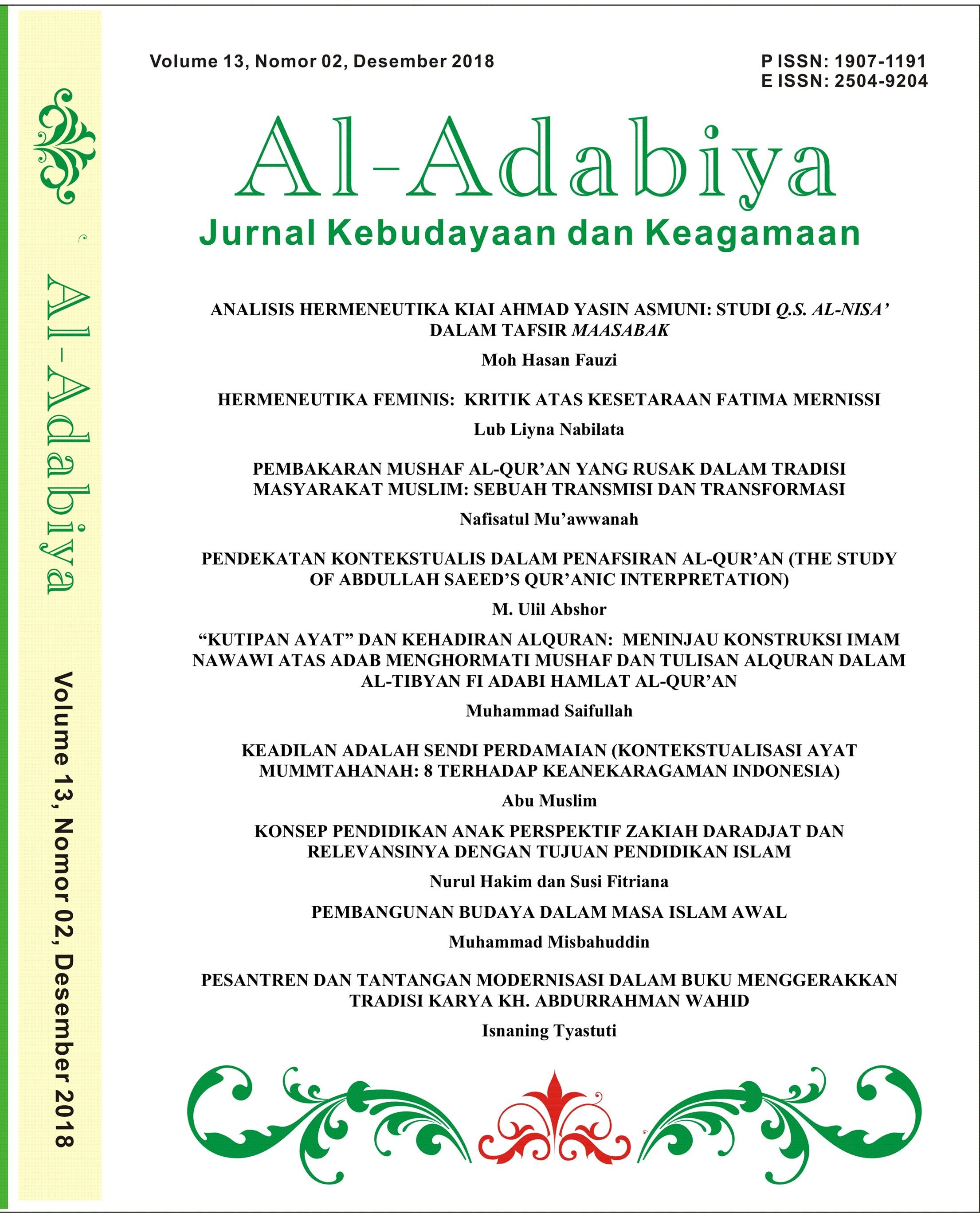Pendekatan Kontekstualis Dalam Penafsiran Al-Qur’an (The Study Of Abdullah Saeed’s Qur’anic Interpretation)
DOI:
https://doi.org/10.37680/adabiya.v13i02.25Keywords:
Approaching, contekstualization, Qur’anic InterpretationAbstract
Qur’anic Interpretation has an important place in the development of Muslim intellectual traditions and Islamic civilization in general. As a major source of Islamic teachings, Muslims have for centuries ago tried to understand the meaning of the Qur'an to fit the needs of the times, one of which is by the way of contextualization. In this case the author tries to explain the style of contextual interpretation initiated by Abdullah Saeed. In principle, Saeed explained that the tradition of interpreting the Qur'an contextually had existed since the beginning of the 1st century H and 2nd H, which was initiated by the friend of Umar Ibn al-Khattab (w.23 / 644). Because the socio-historical setting when the text of the Qur'an goes down is very possible to be interpreted contextually, so that the steps offered by Abdullah Saeed in addition to having a theoretical foundation in his interpretive style eat the steps offered by him. First, preliminary considerations (the Qur'anic world, the World of readers including life experiences and linguistic or linguistic aspects. Second, beginning the task of interpretation. Third, Identifying the meaning of the Text before interpretation includes lingistics, literature, types of texts, relationships with parallel text. Fourth, linking the interpretation of the text with the current context (understanding the context of the link, interpreting it through the next generation in succession, modern context analysis, comparison of contexts one and two, adopting relevant interpretations and checking the feasibility of interpretation.
Downloads
Published
How to Cite
Issue
Section
License
The author(s) retain/s the copyright and grant/s Al-Adabiya: Jurnal Kebudayaan dan Keagamaan the first publication rights licensed under the Creative Commons Attribution-ShareAlike 4.0 International License (CC BY-SA 4.0) which allows others to access (search, read, download and quote), share (copy and redistribute the material in any media or format) and adapt (mix, modify and develop) works for legitimate purposes, even commercially, with recognition of the authorship of the work and its initial publication in this journal.







